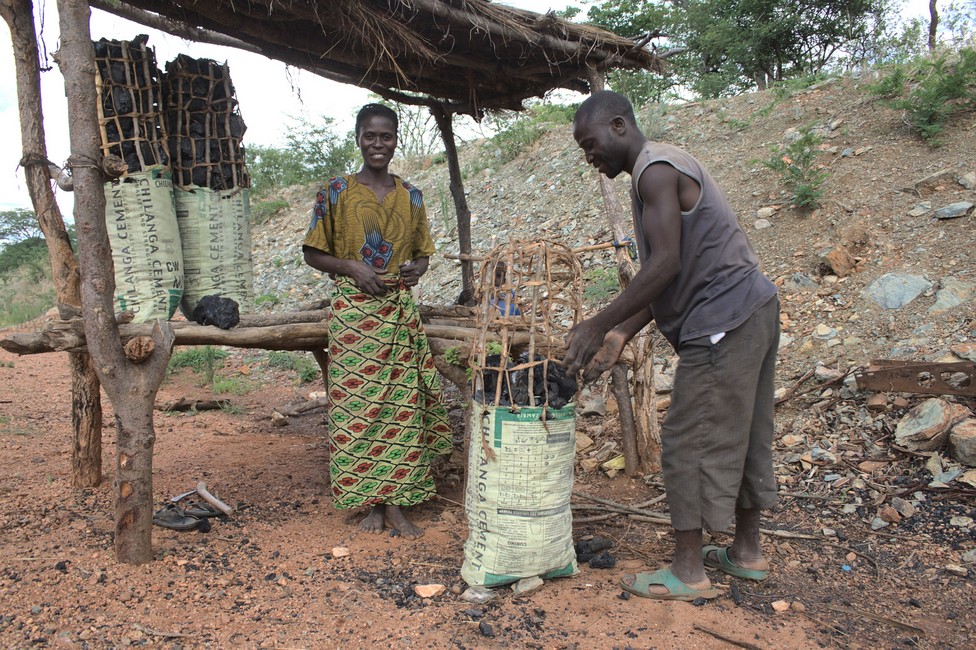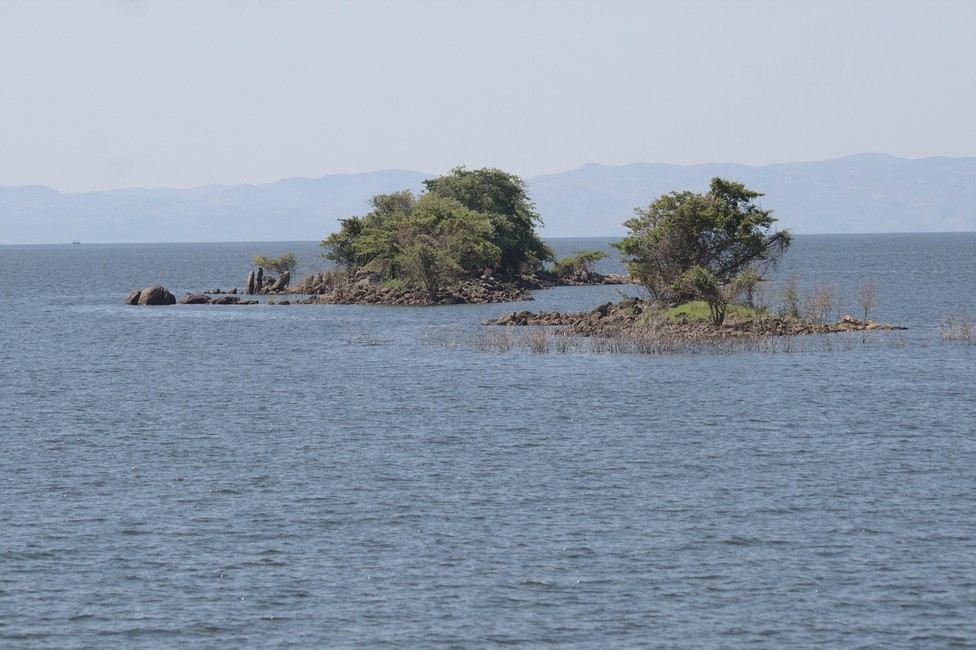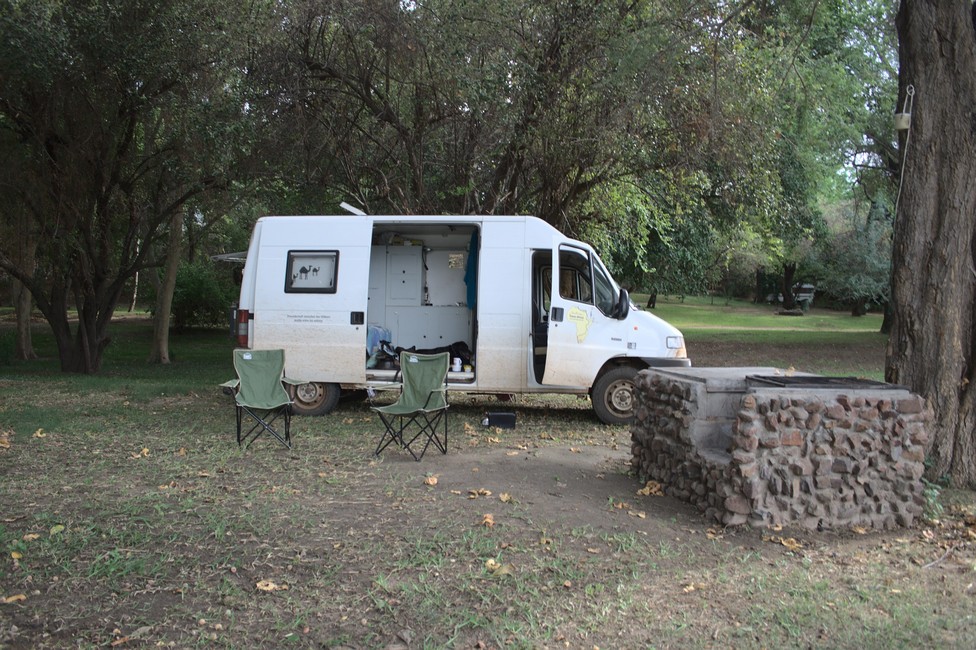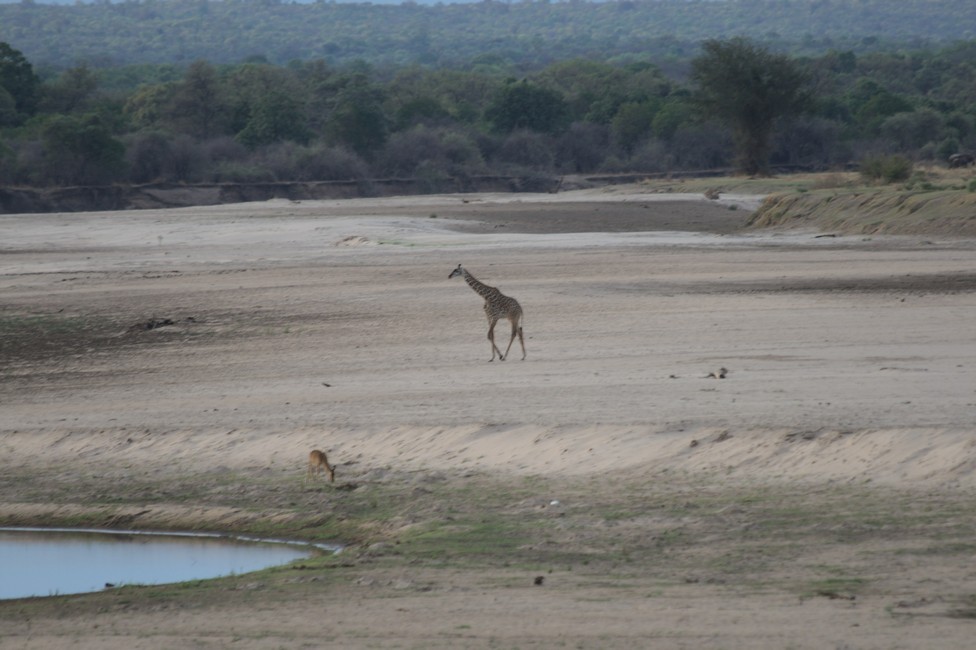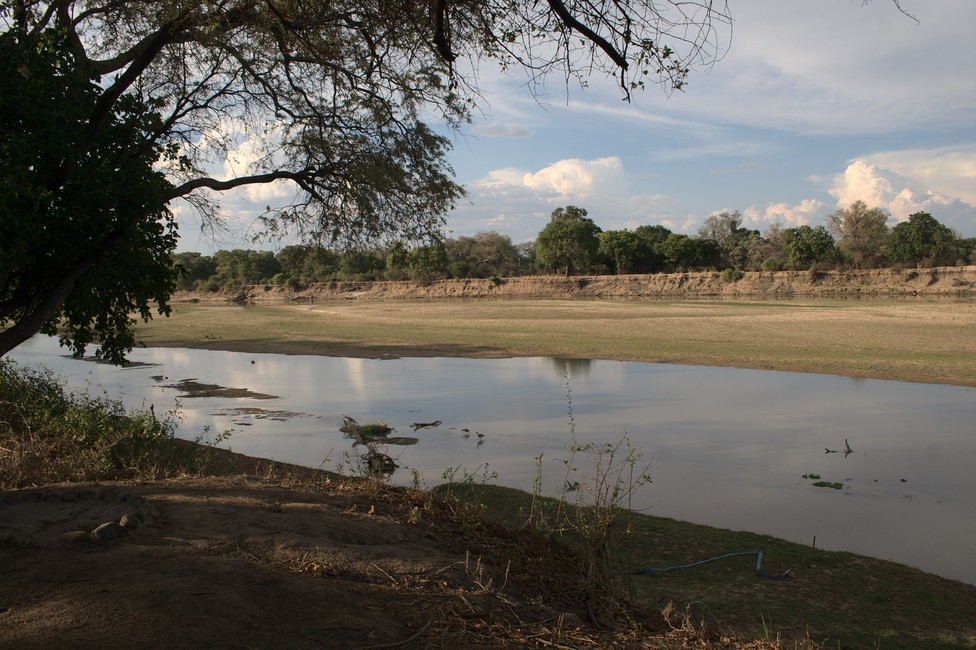Back at Moorings campsite we suppose that Tara has again tick fever but we are not sure. The next morning it was much more dramatic as she could not morve her hind legs so we drove another 100 km back north to meet the British Vet.

She examined Tara carefully and came to the conclusion that she has got the sleeping sickness which she obviously had from some wet area where the tsetse fly is comon. Tara got injections and antibiotics, we stay a few days more with the Swiss couple in Moorings until she has recovered. So we moved on to Livingstone again and gave Tara there a few days to recover as here it is close to the Namibian border.

However, we are a little pressed for time, because the rainy season has begun and it is pouring with rain. In addition, our visa expires and we should continue to Namibia. Unluckily we are as our power cord extension went up in flames, no idea why but I just could stop it before the whole 50 meters were gone. So despite the rain I had to shorten the power cord and add a new plug to have power again.

We wait for the worst rains to be over, Tara is feeling better and so we set off towards the border.


From Livingstone until the border is around 200 kilometers, we will make it in one day. The route is fairly straight forward on a good tarmac. Despite major traffic route, there is little traffic, it hardly exists border traffic between Zambia and Namibia.

A modern bridge over the Zambezi River connects the two countries and was added to a ferry, which was once the only link between the two countries here.
At the end of the bridge is the border post. We leave Zambia and traveling to Namibia.

